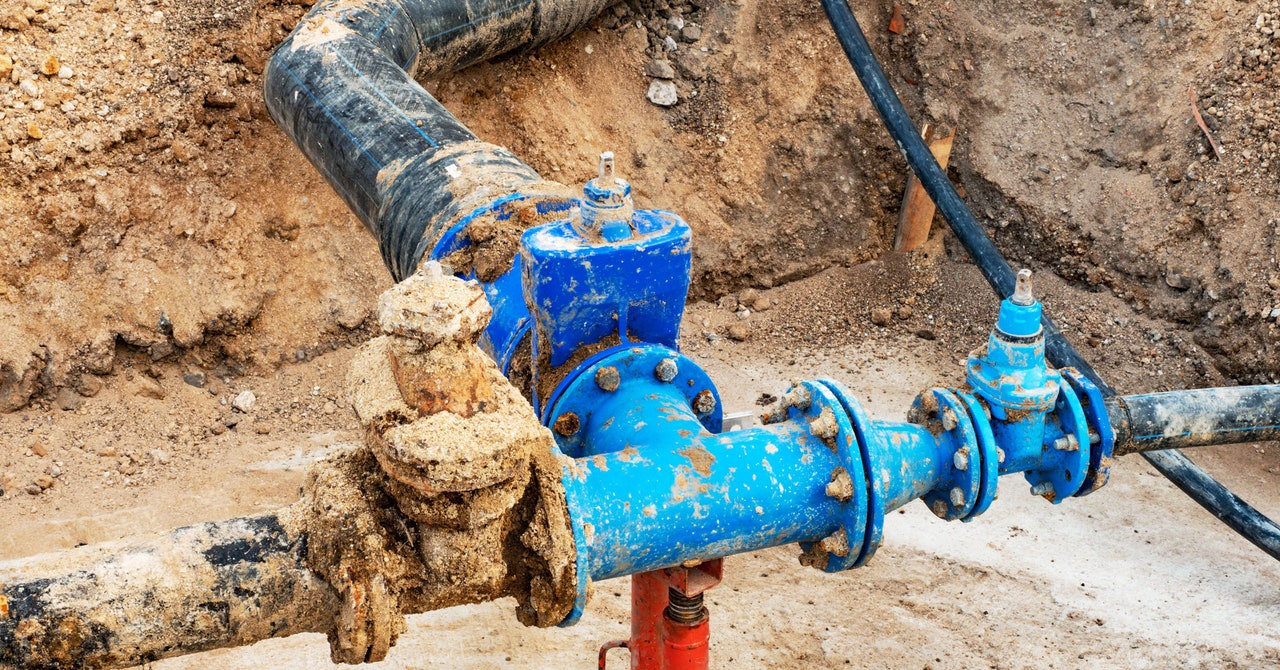
This story originally appeared on Inside Climate News and is part of the Climate Desk collaboration.
The hottest summer on record for many Texas cities has brought millions of dollars in damage to municipal plumbing and the loss of huge volumes of water during a severe drought.
Authorities across the state are struggling to keep up with widespread leakage even as they plead for water conservation and have restricted outdoor water use. The impact on Texas’ water systems highlights both the vulnerability of basic infrastructure to a warming climate and the high costs of adaptation.
“The intense heat and drop in annual rainfall have dried up the soil, causing a shift in water lines,” said Erin Jones, a spokesperson for the city of Houston, which logged its hottest summer on record this year. “When the pipes shift, the pipe joints can break, causing water leaks.”
She said the municipal government in Houston was taking 500 calls per week for water leaks, up from 300 around this time in 2022, when drought conditions were less severe. The city, which budgets almost $20 million annually for water line repairs, has authorized an additional $33 million in spending this year to bring in contractors to help municipal workers with repairs, Jones said.
In addition to the dry, shifting soil, the leaks result from the brittleness of aging pipes and a high demand on the city’s water infrastructure despite the conservation appeals and edicts. “The demand on the system continues to increase due to customers’ using more water and increased water leaks,” Jones said.
Leaking pipes cost Texas billions of gallons of water and hundreds of millions of dollars annually. Texas water utilities reported 30.6 billion gallons lost to breaks and leaks in 2021, the most recent year for which data is available. The Texas Water Development Board, a state water authority, estimated an additional 101.6 billion gallons of unreported loss that year.
Those losses collectively accounted for 12 percent of total reported water use and cost the state an estimated $266 million (which considers the production cost of the water lost, not the repairs to busted pipes) in 2021. That year, Texas enjoyed below-average summer temperatures and a near-total absence of drought conditions. The figures for this year, which will not be published until 2024, are likely to show far higher loss rates and attendant costs.
This year, record-breaking temperatures hit Texas in late June and lingered through early September—part of a global heat wave that also set records from China to Morocco to Bolivia and made this summer the world’s hottest since at least 1940.
The US Drought Monitor currently shows more than half of Texas experiencing “severe drought,” and nearly one-third “extreme drought.” The groundwater in aquifers is declining, and some reservoirs are nearing alarmingly low levels.
For the state as a whole, this summer was the second-hottest on record, ranking behind 2011 and ahead of 2022, according to John Nielsen-Gammon, director of the Southern Regional Climate Center at Texas A&M University. (For meteorologists, summer runs from June through August.)
For several cities in addition to Houston, it was the hottest. Among them was San Antonio, where water main breaks averaged about 470 per month from January to June and then jumped to 725 in July and 1,076 in August as extreme heat bore down.

